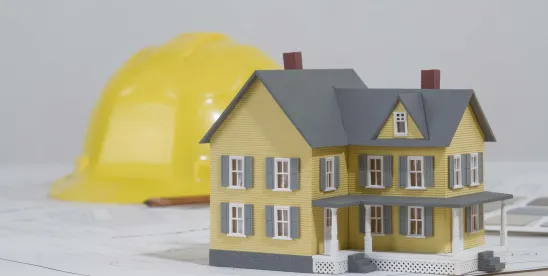You may recall a few years ago that the Michigan Court of Appeals in Miller-Davis Company v. Ahrens Construction, Inc., 296 Mich.App. 56; 817 N.W.2d 609 (Mich. App. 2012) denied a general contractor’s indemnity claim against a roofing subcontractor in connection with the construction of a YMCA recreational facility (the “Project”) based on the accrual date of the statute of limitations. This case was filed after the YMCA discovered excessive condensation in the natatorium. In holding that the general contractor’s claims were time-barred, the Court of Appeals noted that under MCL § 600.5827, “[a] claim accrues at the time the wrong upon which the claim is based was done regardless of the time when damages results.” Relying upon previous decisions from the Michigan Court of Appeals, the court recognized that “[a] cause of action for breach of a construction contract accrues at the time work on the contract is completed.” Because the subcontractor completed its work on the roof by the end of February 1999, the wrong that the general contractor complained of (i.e., that the subcontractor deviated from the plans and specifications) must have occurred at that date. However, the general contractor did not file its complaint until May 12, 2005, more than six years after February 1999 and more than six years after the general contractor accepted the subcontractor’s work and paid the defendant in full. Based on these facts, the court found that the general contractor’s claims were time-barred.
The Michigan Supreme Court disagreed. On April 15, 2014, the Supreme Court issued its opinion in Miller-Davis Company v. Ahrens Construction, Inc., --- NW2d ---, 495 Mich 161 (2014) reversing the Court of Appeals and holding that the subcontractor’s breach of the indemnity provision was an independent breach of contract claim that was subject to a separate statute of limitations analysis. As such, the accrual date for the indemnification claim could not occur until after the subcontractor breached its promise to conform its work to the subcontract’s specifications. In reaching this decision, the Supreme Court reasoned:
The Court of Appeals examined the subcontract to determine the wrong on which Miller–Davis's claims were based, explaining that the underlying basis for its claims was Ahrens's breach of the contract provision that ‘[a]ll materials and/or work furnished on this order shall comply with the terms and the requirements of the plans and specifications.’ As a result, the Court of Appeals held that the wrong that provided the basis for Miller–Davis's complaint ‘must have occurred on or before defendant completed its portion of the overall construction project.’ This analysis fails to recognize that Ahrens twice breached the contract: first, when it failed to install the roof system in accordance with the relevant plans and specifications, and then later when it refused to indemnify Miller–Davis for the corrective work required to remedy its nonconforming installation.
Id. While the general contractor’s breach of contract and indemnity claims arose out of the same contract, the Supreme Court reasoned that nothing in MCL 600.5807 or Michigan contract law principles compels the conclusion that the claims must share a common point of accrual. “[T]he date of accrual for the breach of an indemnified promise does not serve as the date of accrual for an indemnity action. These separate breaches have logically distinct points of accrual.”Id. Because the general contractor did not discover the non-conforming work until several years after substantial completion, the statute of limitations on the indemnity claim (which demand was made after discovery of the defective workmanship) did not begin to accrue until several years later and was not time barred. The Supreme Court’s decision to extend the accrual date for indemnity claims greatly expands the potential liability for claims against contractors and lower tiered subcontractors.
Another import aspect of the Supreme Court’s decision concerns its reversal of the lower court’s holding that a “claim or demand” was never made by the general contractor against the roofing subcontractor. The Court of Appeals rejected the general contractor’s claim that the subcontractor breached the subcontract when it demanded in 2003 that it correct the defective work and the defendant refused because “no claims, suits, actions, recoveries, or demands were ever made, brought or recovered against” the subcontractor within the meaning of the indemnity contract. While the owner made demands upon the general contractor to correct the defects in the roof installed by the subcontractor, the general contractor voluntarily agreed to perform the corrective work without necessitating a formal claim or lawsuit. Thus, because no claims or demands were “made, brought or recovered against” plaintiff, the Court of Appeals reasoned that the indemnity provision of the subcontract could not be used as an alternative accrual date for its underlying breach of contract claim.
The Michigan Supreme Court did not take such a narrow view of what constitutes a claim and reversed the Court of Appeals. In reaching its decision, the Supreme Court noted that the definition of “claim” itself is broad and encompasses a demand or assertion by one of the parties with respect to a contract provision. The Supreme Court looked to the general contractor’s agreement to perform corrective work for the YMCA and concluded that a claim was asserted against the general contractor even if litigation was not initiated. In reaching this decision, the Supreme Court reasoned “[t]he indemnity provisions do not require Sherman Lake YMCA to prove liability or initiate a lawsuit or arbitration proceeding against Miller-Davis for Miller-Davis to seek indemnification. . .” Id. at *6.
This case clears up the responsibilities of general contractors in responding to demands made by owners to correct defective work performed by subcontractors. It now appears from the court’s decision that a formal claim or lawsuit need not be asserted against the general contractor before a subcontractor’s indemnity obligations are triggered.




 />i
/>i
